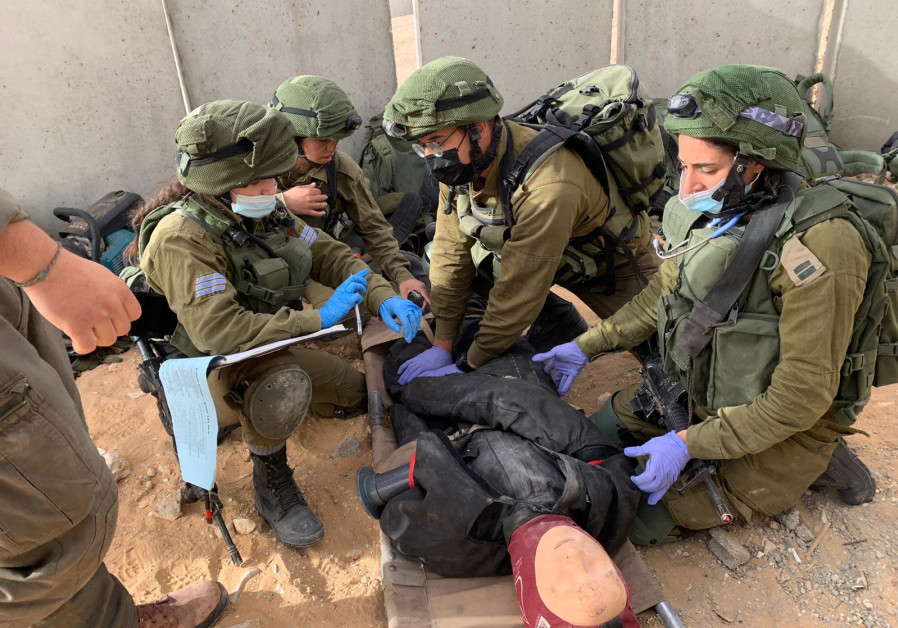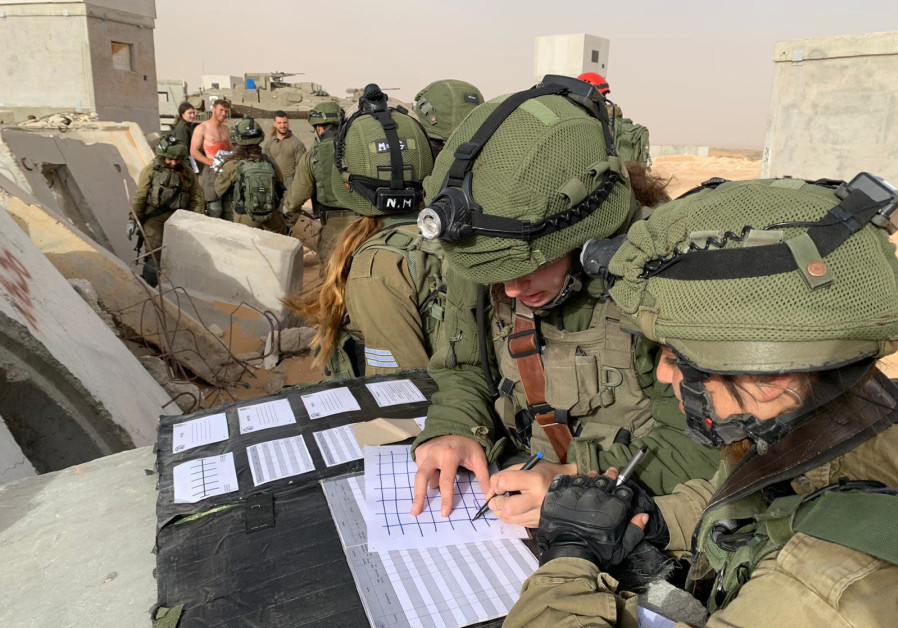An improvised explosive device is detonated in a building where a commando unit is gathering, deep inside enemy territories. Several elite unit soldiers are trapped, and there’s a need to join forces with a Home Front Command Search and Rescue company, racing against the clock in order to save those who are under the rubble.
This is the scenario that was exercised in the first-ever joint commando brigade and Home Front Command battalion drill, which was held in the Rotem training center in southern Israel.
Participating were the elite Egoz unit – one of three battalions comprising the Commando Brigade – and the Ram Home Front Command Battalion, which is currently holding a series of exercises.
The drill followed lessons the army has learned from wars in Lebanon and Gaza, when Hamas and Hezbollah, bombed buildings used by
IDF units and which collapsed on the soldiers.
“The background to this exercise are incidents such as the Tyre headquarters suicide car bombings, (in 1982 and 1983) the explosion in the Termit outpost in
Gaza, (in 2001) and the incident of the Egoz unit on July 20, 2006, which led to soldiers being trapped under the rubble,” Ram Battalion OC Lt.-Col. Oz Gina told
The Jerusalem Post on Tuesday.
“All of these brought about the need to practice such cooperation.”
Gino said that in such cases, the Ram Battalion practices its expertise in search and rescue, and the commando battalion’s role is to bring them to the scene and protect them.
“The operational condition for this kind of event is that there is isolation between my forces and enemy forces, and it is sterilized of explosive devices,” he said.
During the drill, both units practiced joining forces, which included holding a joint situation assessment by the top commanders and exercising cooperation between the battalion’s combat engineers and medical staff.
Gino mentions the fact that many of these explosion sites could sit on top of enemy attack tunnels, which could still pose threats to his force. Because of that, he sends his top soldiers to these kinds of incidents.
The Ram Battalion is a co-ed unit that is not meant to fight across Israel’s borders. However, Gino said that because he needs his best combat warriors in these incidents, he will send both men and women, regardless of their gender.
“There’s a clear message in the Home Front Command regarding assimilating women in our ranks: Female soldiers are doing exactly what male soldiers are doing: whether it is manning posts in day-to-day activities or in carrying out missions behind the border,” he said. “We are picking our best combat warriors, without differentiating whether they are a man or a woman.
“We need qualified soldiers who can bear the mental burden, operate under fire and understand the complexity of the situation,” the OC said.
“I don’t feel the necessity to expand on this issue,” Gino said, “because I know the female soldiers in my battalion and I know that in the day-to-day routine activities, they are exactly equal to my male soldiers.”


